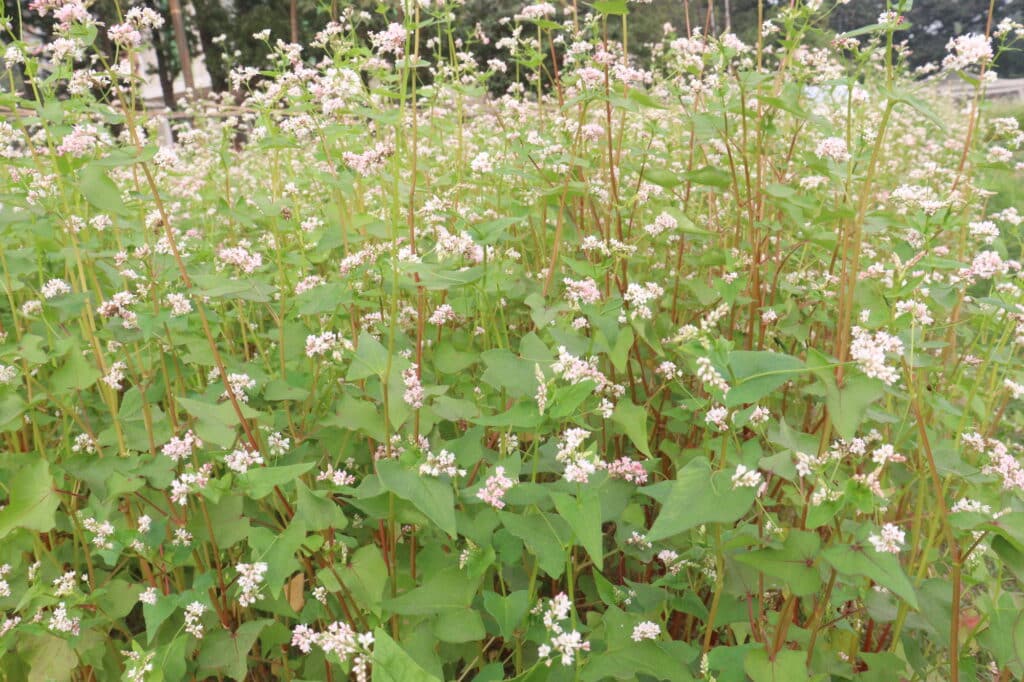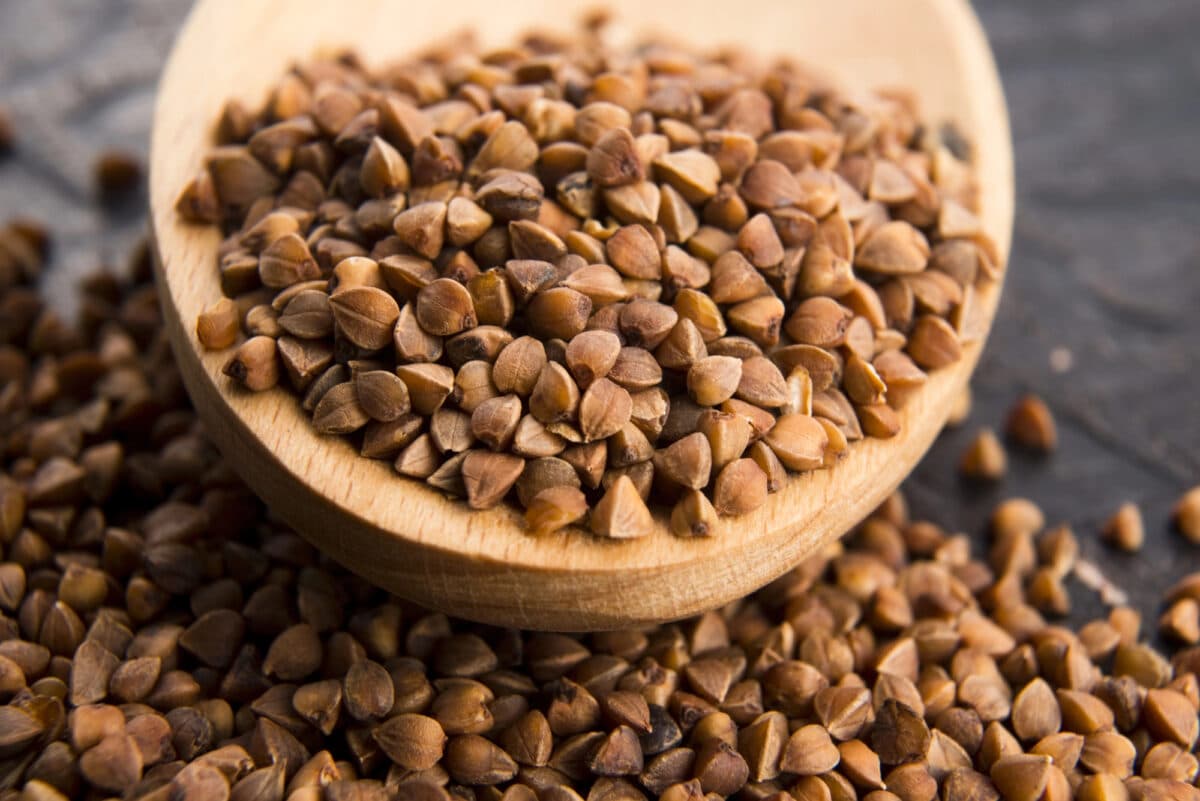Buckwheat is a highly versatile plant used both as a food source and for its agricultural benefits. It’s not actually related to wheat; instead, it belongs to the same family as rhubarb and sorrel, making it a gluten-free alternative.
In Eastern European cuisine, buckwheat groats are used in dishes like kasha. In Japan, soba noodles are made from buckwheat flour. Buckwheat is commonly ground into flour and used for pancakes and baking gluten-free confections such as triple chocolate cookies.
Originating in Asia, it has been cultivated for over 8,000 years. It spread to Europe and North America, where it became valued for its adaptability to poor soil conditions.
KASHA
Kasha is a traditional Eastern European dish made from buckwheat groats. These groats, which are hulled kernels of buckwheat, are either whole or cracked and can be cooked much like rice or barley. In Russian and Polish cuisine, kasha is a staple food that is enjoyed in many households. It’s also incorporated into religious and festive meals, symbolizing health and prosperity.
Kasha is often toasted before cooking, which enhances its nutty flavor. It’s then boiled in water or broth until it becomes tender. The cooking process is similar to that of other grains, where the groats absorb the cooking liquid and puff up.
In culinary use, kasha can refer to buckwheat in several forms, including whole, cracked, or ground. It can also be cooked to different consistencies, from loose and fluffy to a porridge-like texture. Kasha is valued for its flavor and also for its nutritional benefits, as it is rich in fiber and essential minerals.
It is commonly served as a side dish, often mixed with sautéed onions, mushrooms, or other vegetables. Kasha can also be a main component in pilafs, added to soups, or used as a filling for dumplings or blintzes.

SOBA NOODLES
Soba noodles are a type of Japanese noodle made primarily from buckwheat flour, which gives them a distinctive nutty flavor and a slightly grainy texture. Soba has a significant place in Japanese cuisine and culture. It’s often eaten on New Year’s Eve as part of a tradition called “Toshikoshi Soba,” symbolizing the wish for a long and healthy life, similar to the long noodles.
Traditional soba noodles are made from a combination of buckwheat flour and wheat flour, though the ratio can vary. Pure buckwheat soba, known as “juwari soba,” is highly prized for its flavor and is also gluten-free, but it’s less common because it’s more difficult to make due to the lack of gluten.
Soba noodles are typically thin and can range in color from light beige to dark brown, depending on the type of buckwheat flour used. They are boiled in water, similar to other pasta, and usually cooked until just tender, which takes about four to six minutes.
Soba can be served both hot and cold. Cold soba, often served on a bamboo mat with a dipping sauce called tsuyu (made from soy sauce, mirin, and dashi), is especially popular in the summer. Hot soba is commonly served in a broth as noodle soup, often with toppings like scallions, tempura, or tofu.
Soba noodles are a good source of protein, fiber, and several minerals. They are particularly noted for their content of rutin, a bioflavonoid that can help improve circulation and prevent the hardening of arteries.
BAKING
Shout out to Andrew Janjigian, who posted ‘a love song to Buckwheat’ with a recipe for Buckwheat Rye Crêpes on his wonderful breaducational email, Wordloaf.
“Good for the ground, good for you. As farmers are planting spring grains, I thought I’d give a shout out to one of my favorite crops, buckwheat!… Cycling a round of buckwheat through a field interrupts the cycles of pests and disease that are attracted to crops. Additionally, buckwheat’s expansive root system builds soil health, and its many leaves help smother weeds…”

GROWING
Buckwheat is often grown as a spring or summer crop. It is particularly noted for its short growing season, typically maturing in about 70 to 90 days.
Buckwheat does well in a variety of soil conditions, including acidic or low-fertility soils, but it thrives best in well-drained soil. It does not require a lot of nitrogen and can grow in regions where many other crops might struggle.
Since buckwheat grows quickly, it can be harvested within a few months of planting, making it a good choice for filling in gaps in crop rotations. Buckwheat is also valued as a cover crop in sustainable agriculture. It can quickly establish ground cover to suppress weeds, protect soil from erosion, and attract beneficial insects.

